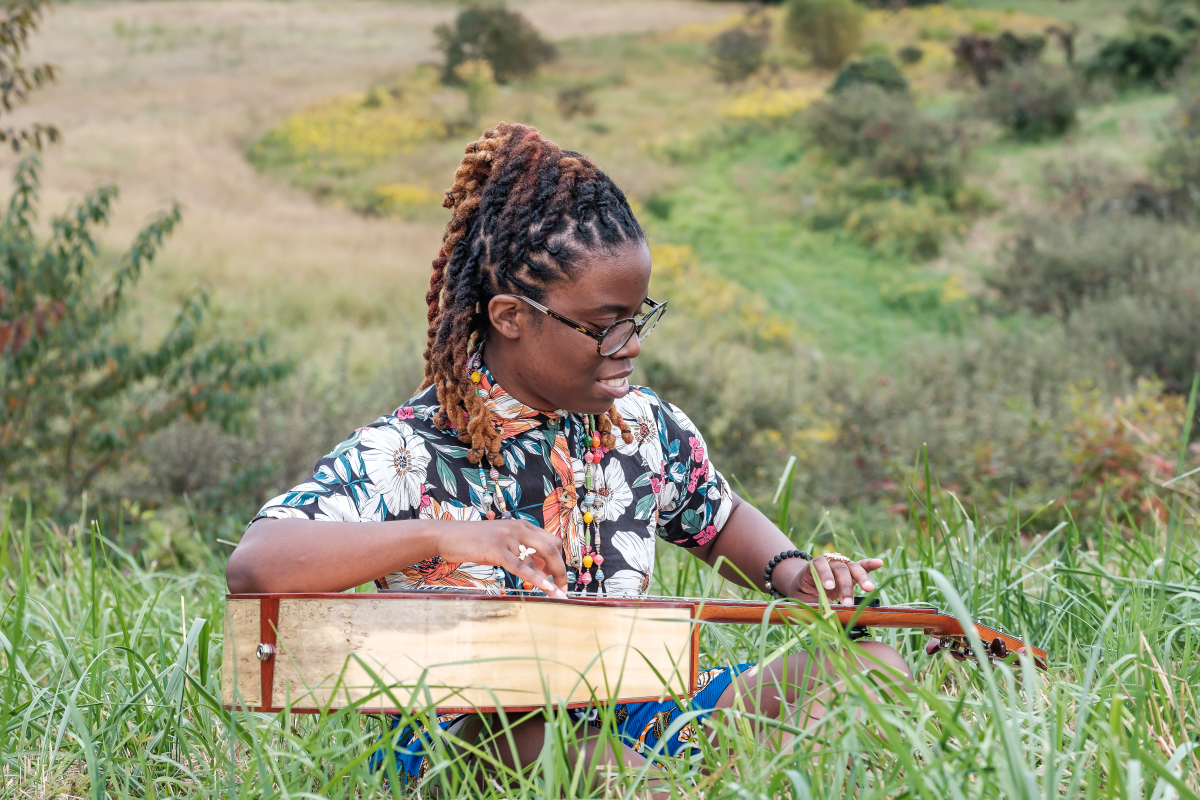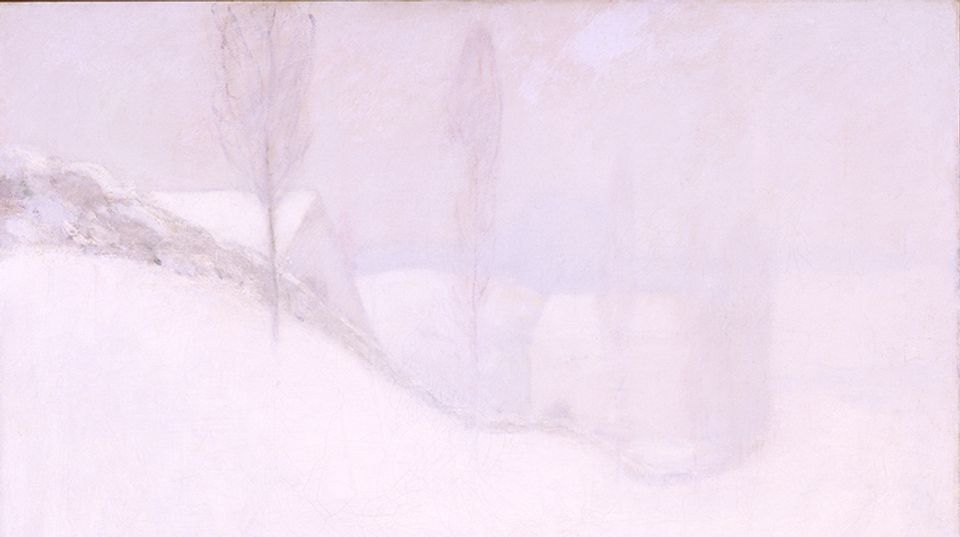From 2011 to 2020, SAAM hosted Luce Unplugged, a free, monthly concert series that celebrated the work of local musicians in its Luce Foundation Center. Since in-person events have been restricted during the pandemic, we teamed up with a local music podcast, Hometown Sounds, to continue to bring you music and conversations from your favorite DC artists. In our May episode, Yasmin Williams discusses her unique approach to acoustic guitar. To hear the full interview, visit hometownsoundsdc.com.
Hometown Sounds: How did you begin to play the guitar on your lap? Is that something that you took on from looking at other musicians or did you make it up on your own?
Yasmin Williams: I got the idea on my own and I messed around with it. The first time I tried, I couldn't do it, so I stopped and waited about three months or so and tried it again and it was a lot better. Then I found two people who play that way, guitarists Erik Mongrain and Tony Haven. I learned a couple of Haven’s songs. He plays in his lap, but the technique he uses is different from mine.
Those are the only two people I can think of. I mainly developed it on my own. I would also watch guitarists’ YouTube videos, but they didn’t really inspire me. I wanted to write my own songs and figure out my own voice. To me, that would be more fun than learning a cover. I'd already done that with electric guitar, and I was over it by the time I switched to acoustic.
HS: Your songs are instrumental. How do you come up with a name for an instrumental song and could you tell us about the origin of the song title, Sunshowers?
YW: I don't name most of my songs. If I've finished the song, I typically play it at a show and I tell the crowd this song was untitled number whatever, because that's what it’s called in my phone or on my computer. A lot of times, people who attend my shows give me great names. I've also had song-naming contests online, which is how I got the names Urban Driftwood and Dragonfly. I look at the name and figure out a context in which it would work. A lot of people got similar vibes from the songs that were included on Urban Driftwood and the names they suggested were very cohesive.
The only one I named was Sunshowers. I thought the concept of rain while the sun is out fit the song perfectly. It fit the mood I wanted to capture. In the beginning of 2020, we were very enthused and excited, and little did we know, the pandemic was coming. The title fit the overall trajectory I wanted the album to take.
HS: What was your journey to learn to play the mbira?
YW: I haven't really learned anything to be honest, I’ve been just noodling around. The approach I take with anything, from the kora to the mbira to tap shoes, is what serves a song. I figure out how to play what's in my head or what I think is needed. If you ask me to play a traditional song on a kalimba, I can't do that because I don't know how yet. I haven't dived into that. I really do want to, but It's more a different instrument service, another compositional tool. I'm not really looking for mastery at this point because it would take a lifetime.
HS: What made you decide to make a music video for Urban Driftwood? Why do you think a music video is important to have nowadays?
YW: I thought it was important for that particular song because of what I wanted to say through the visual format. The theme of the album is nature in urban spaces. We may perceive urban space as something it is not. For example, the video was shot in Baltimore. We may not think of Baltimore as having nice natural spaces, or even little spots of nature. That's something that I thought would be cool to showcase, and Amadou Kouyate, the director, did a great job with that.
HS: So now that the world is changing yet again, and things are starting to open up, what can we look forward to with your musical output?
YW: I have a cool concert on July 21. The NYC-based orchestral group, Contemporaneous, is arranging three of the songs on Urban Driftwood. I’m working with three composers who are doing a great job. This is the first time I've ever had my music arranged for an orchestra and I'll be playing with them.
I'm writing a piece for a berimbau group called Projeto Arcomusical. They commissioned me to write in a piece and it's daunting but fun. I’m happy that I get to flex my composer muscles and work in ways that are different from what I usually do.
On Instagram, I've been posting clips of random stuff that has been in my head. I'm definitely planning to use more electric guitar in tunes. It will be the same vein as my acoustic stuff, but for a different voice.
HS: Where can your musical friends go to follow what you're doing?
YW: I would say Instagram or Twitter are the best options. Visit yasmanwilliamsmusic.com to find all my show dates. I'm on Bandsintown and Songkick too, if anyone uses those. Those are the best places to keep up with me.
Luce Listening Party with Yasmin Williams drops Friday, May 28.


















